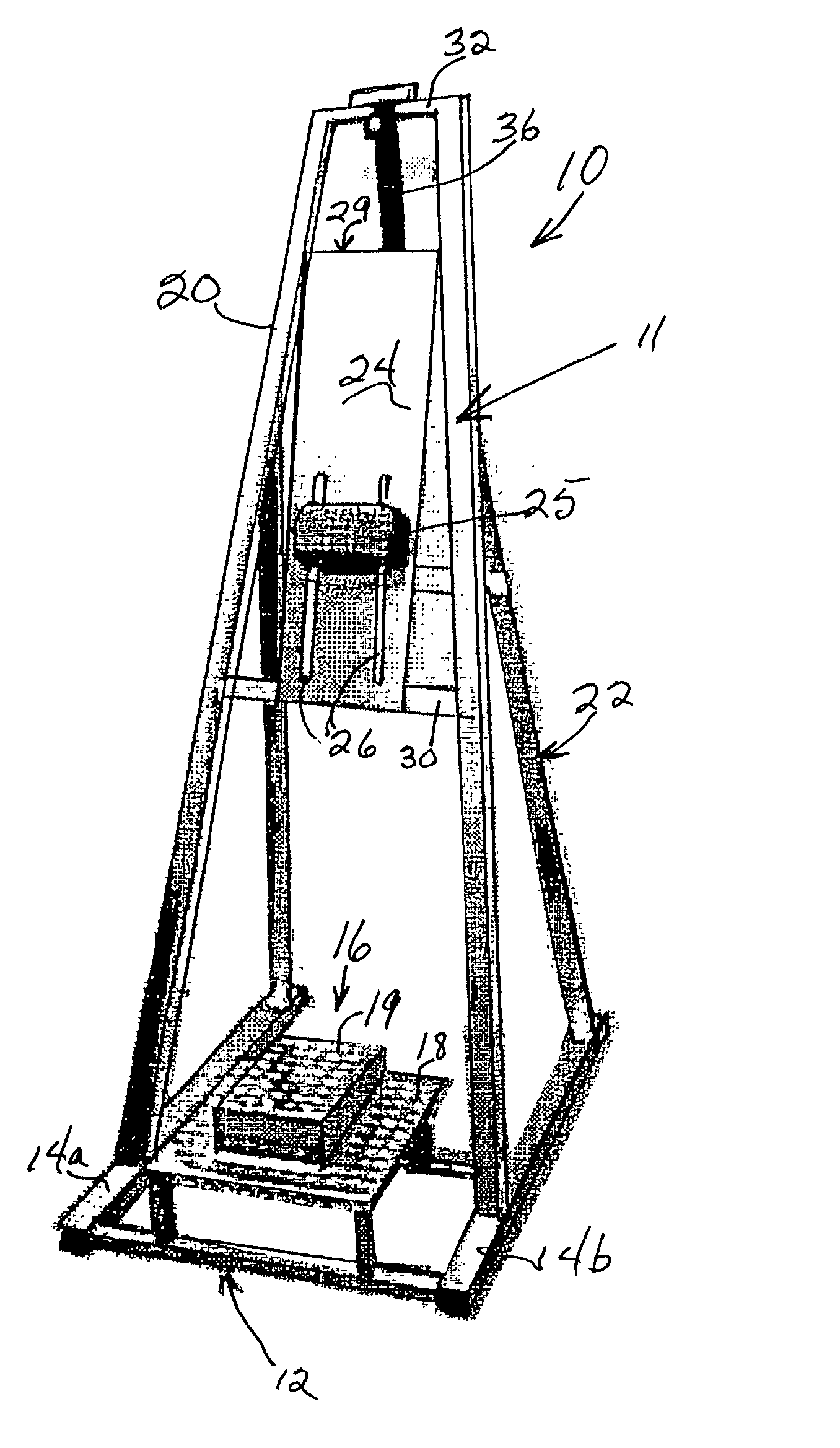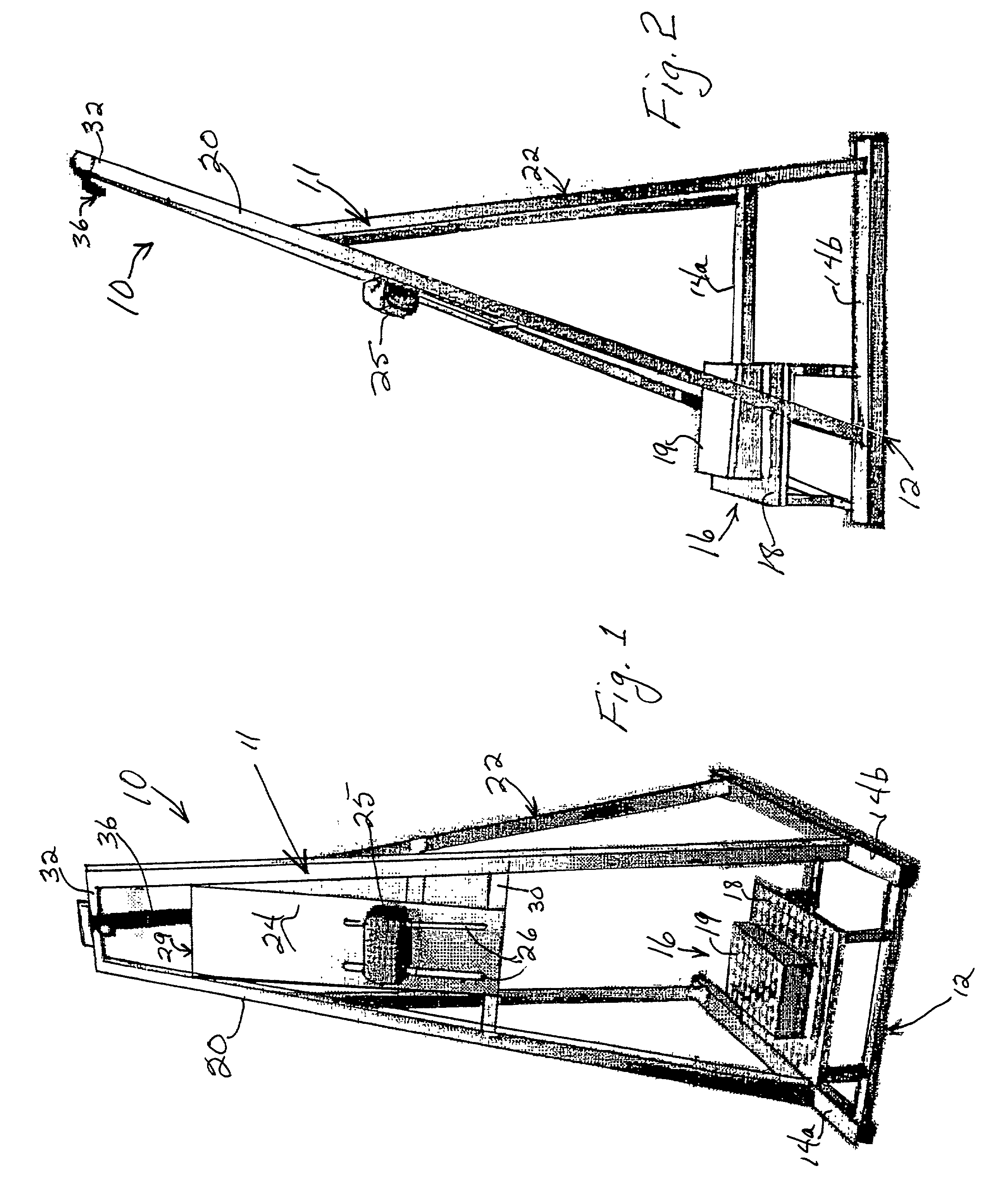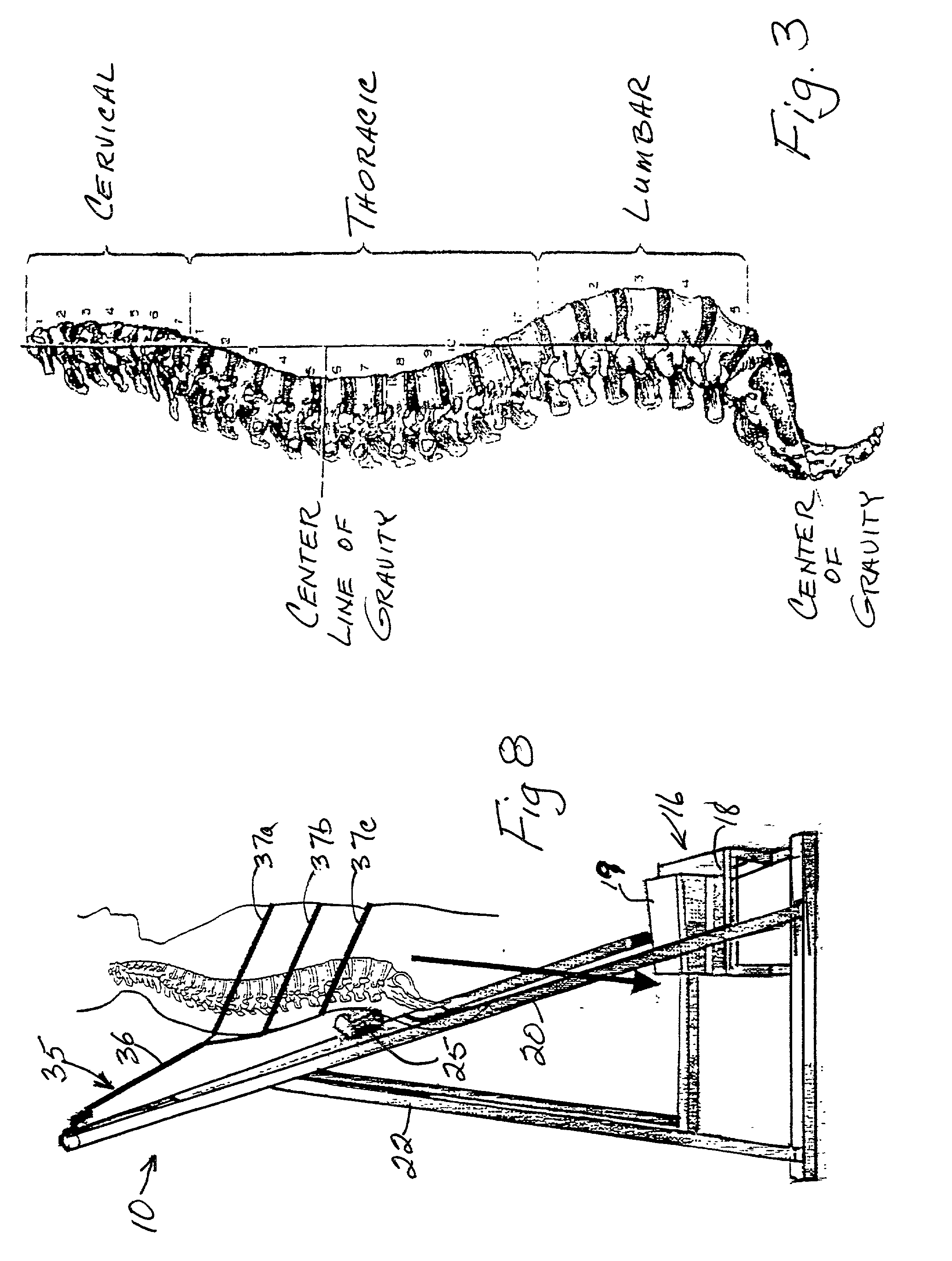Vertical traction assembly and method
a technology of vertical traction and assembly, which is applied in the field of vertical traction assembly and method, can solve the problems of temporary and permanent disability of many people, inability to get lasting relief, and may even get worse, and achieve the effect of relieving pain and reducing inflammation
- Summary
- Abstract
- Description
- Claims
- Application Information
AI Technical Summary
Benefits of technology
Problems solved by technology
Method used
Image
Examples
Embodiment Construction
[0035] Traction assembly, generally designated 10 in FIGS. 1 and 2, includes a frame structure 11 having a front portion 20 and a rear portion 22 each fixedly secured to the other and to main base support elements 14a and 14b of base 12 as shown. Front frame portion 20 includes a backboard 24 fixedly mounted to upper board support member 29 and lower board support member 30. A torso harness 35 is attached to depend from upper frame cross-rail member 32. Traction focusing pad element 25 is adjustably mounted to two parallel slots 26 in backboard 24. Threaded stud bolt members project outwardly from the rear of pad element 25 and protrude through slots 26. And wing nut members releasably tighten pad element 25 to enable adjustment along backboard 24 to a desired position where element 25 is disposed adjacent an inflamed area of the patient's spine.
[0036] Frame structure 11 is free standing and composed of metal such as aluminum with the frame member connections welded together. The co...
PUM
 Login to View More
Login to View More Abstract
Description
Claims
Application Information
 Login to View More
Login to View More - R&D
- Intellectual Property
- Life Sciences
- Materials
- Tech Scout
- Unparalleled Data Quality
- Higher Quality Content
- 60% Fewer Hallucinations
Browse by: Latest US Patents, China's latest patents, Technical Efficacy Thesaurus, Application Domain, Technology Topic, Popular Technical Reports.
© 2025 PatSnap. All rights reserved.Legal|Privacy policy|Modern Slavery Act Transparency Statement|Sitemap|About US| Contact US: help@patsnap.com



